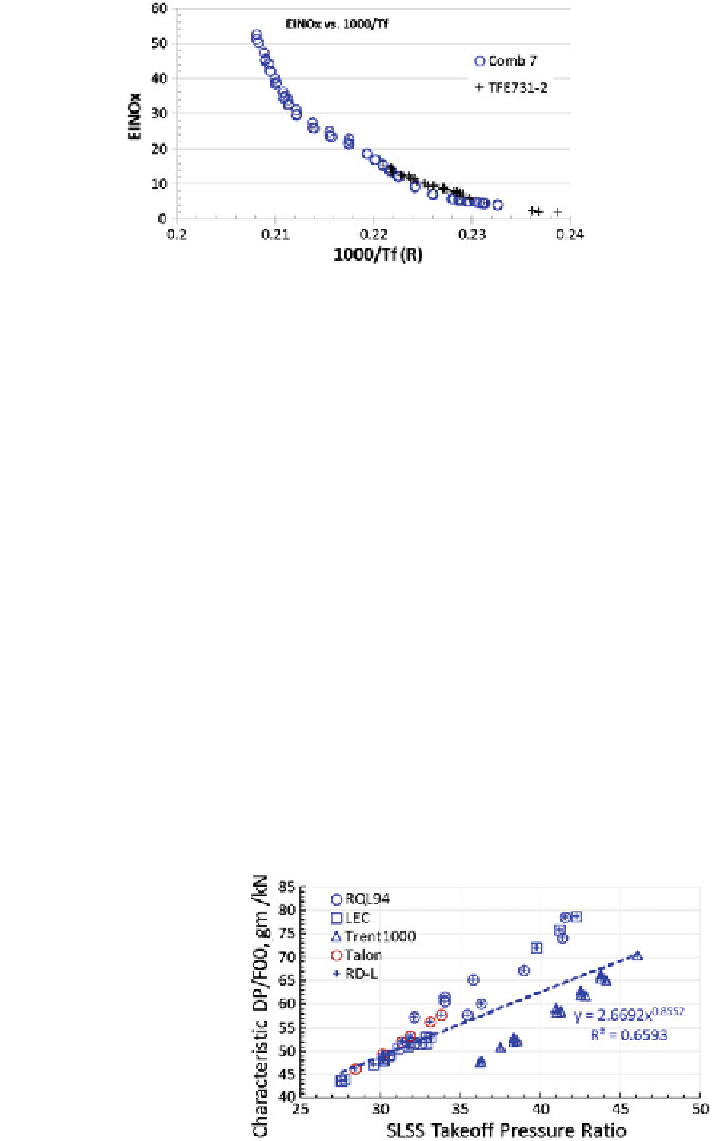Environmental Engineering Reference
In-Depth Information
Fig. 14 EINO
x
versus 1000/T
f
of Comb 7 (from Mongia
2010a
) compared with the TFE731-2
data from Diehl and Biaglow (
1974
); the latter is identi
ed as the
first generation modern
propulsion engine and the former as N generation.
T
f
is the adiabatic stoichiometric
flame
temperature computed from reported P
3
and T
3
data
stoichiometric
flame temperature), it is premature to recommend this approach for
all rich-dome engines to calculate the mission NO
x
emission. The similarity of these
two engines
fl
NO
x
versus stoichiometric curves and those in Fig.
13
discussed
earlier forces one to wonder how much rich-dome NO
x
reduction we can claim, and
therefore providing motivation for alternative design approaches.
Recalling from Fig.
13
, the takeoff NO
x
emissions of the set of several low rich-
dome combustors are represented well by a simple empirical correlation of their
takeoff pressure ratio. However, when the LTONO
x
data of these engines expressed in
terms of the average LTO NO
x
, the correlation quality deteriorates signi
'
cantly,
F
0
hi
namely
DP
7319PR
0
:
9483
2
fit of these engines is
sought in terms of the characteristic LTO NO
x
(Fig.
15
), the resulting expression is
worst off, namely
DP
RD
L
¼
1
:
w
=
R
¼
0
:
8459. When data
F
0
hi
6692PR
0
:
8552
2
RD
L
¼
2
:
w
=
R
¼
0
:
6593
:
ning
RD-L, namely when it does not include the Trent1000 average LTO NO
x
. This is
obvious by looking at Fig.
15
which shows characteristic LTO NO
x
versus takeoff
However the quality of the empirical
fit improves considerably by rede
Fig. 15 Characteristic LTO
NO
x
of the lowest NO
x
rich-
dome large engines as de
ned
in Fig.
13



Search WWH ::

Custom Search